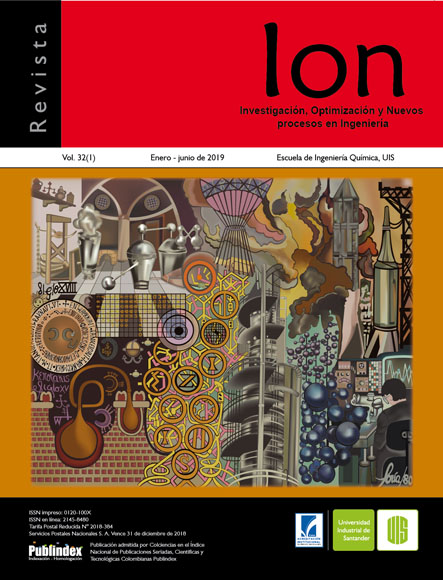Estimating of alcohol density from biofuels using the second virial coefficient
Published 2019-08-30
Keywords
- gaseous phase,
- molar volume,
- thermodynamic property.
How to Cite
Abstract
The molar volumes or densities of six pure alcohols belonged to biofuel industry have been estimated for different values of temperatures within the range between 280 K and 333 K, using a model developed from vapour-liquid equilibrium equation or Clausius-Clapeyron Equation. The second virial coefficient (B) has been calculated from predictive data applied to the model. As widely known, variations in the B value would reflect in the compounds molar volumes with similar result. In this work, it was observed that the deviations were positive for all studied species, and they increased among long carbon chain alcohols. When avalaible, a comparison between experimental and predicted molar volume was done.
Downloads
References
[2] Alptekin E, Canakci M. Determination of the density and the viscosities of biodiesel–diesel fuel blends. Renew. Energy. 2008;33(12):2623-30.
[3] Nita I, Geacai S, Iulian O. Measurements and correlations of physico-chemical properties to composition of pseudo-binary mixtures with biodiesel. Renew. Energy.2011;36(12):3417-23.
[4] Ismail HM, Ng HK, Cheng X, Gan S, Lucchini T, D’Errico G. Development of thermophysical and transport properties for the CFD simulations of in-cylinder biodiesel spray combustion.Energy & Fuels. 2012;26(8):4857-70.
[5] Tesfa B, Mishra R, Gu F, Powles N. Prediction models for density and viscosity of biodiesel and their effects on fuel supply system in CI engines. Renew. Energy.2010;35(12):2752-60.
[6] Gaschi PS.Equilíbrio líquido-vapor (ELV) e líquido-líquido (ELL) de sistemas do biodiesel: dados (binário e ternário) e avaliação dos parâmetros dos modelos termodinâmicos.Curitiba, Brasil: Universidade Federal do Paraná; 2013.
[7] Gerola AP, Peloi LS, Hioka N, Santin Filho O, Kato LA. Determinação da Entalpia de Vaporização de Líquidos pelo Método do Isoteniscópio de Smith e Menzies. Química Nova.2010;33(2):482-8.
[8] Meng L, Duan YY. An extended correlation for second virial coefficients of associated and quantum fluids. Fluid Phase Equilib.2007;258(1):29-33.
[9] Oreški S. Comparison of neural network and empirical models for prediction of second virial coefficients for gases. Procedia Engineering.2012;42:303-312.
[10] Poling BE, Prausnitz JM, O’connell JP. The properties of gases and liquids(Vol. 5).United States of America:Mcgraw-hill;2001.
[11]Tsonopoulos C, Dymond JH, Szafranski AM. Second virial coefficients of normal alkanes, linear 1-alkanols and their binaries. Pure & Appl. Chem.1989;61(8):1387-94.
[12]Vetere A. An improved method to predict second cross virial coefficients. Fluid Phase Equilib. 2005;230(1-2):15-20.

